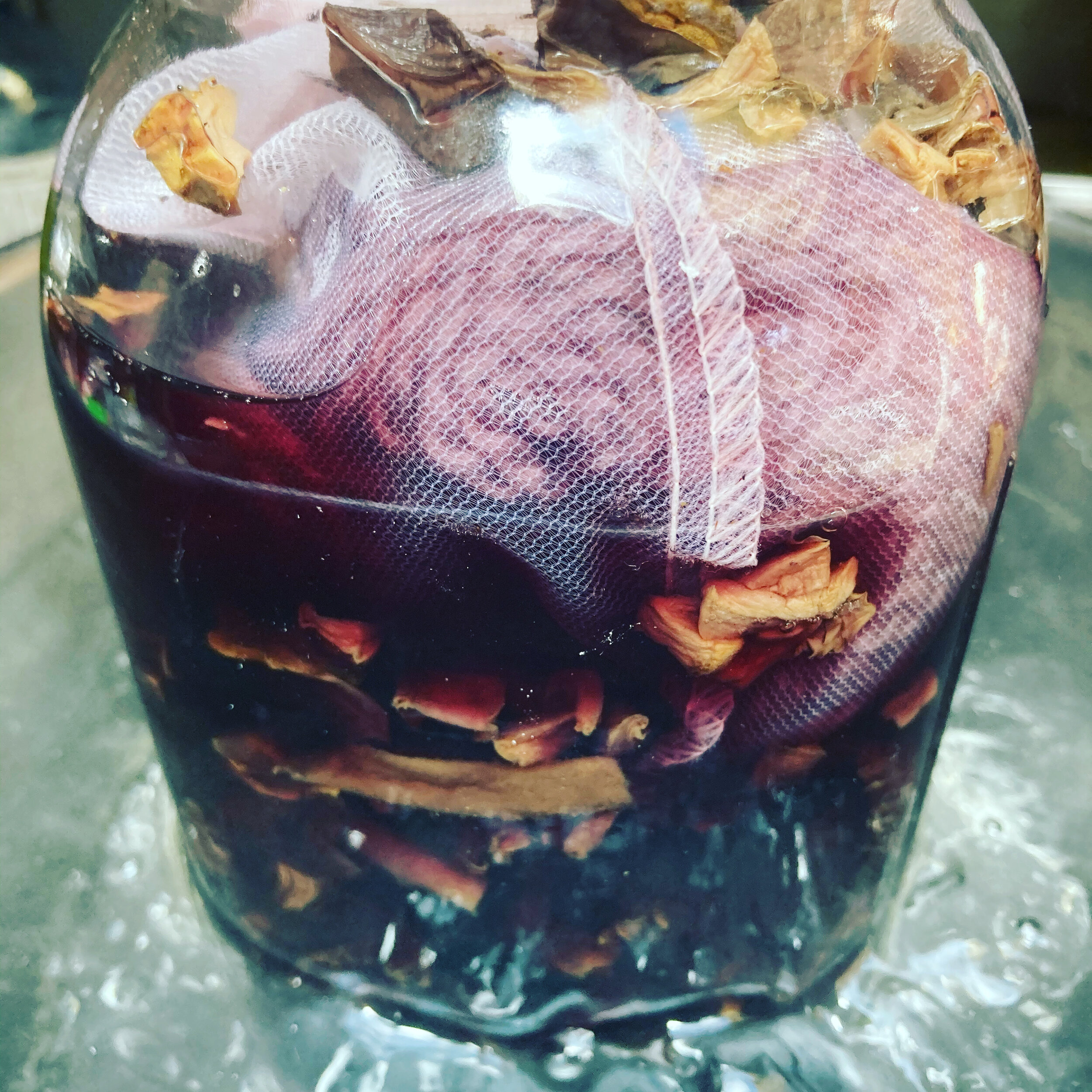Tapinella atrotomentosa Mushroom
Also called the velveted-footed pax, this species comes from the Tapinellaceae family and oddly enough is in the Boletales Order (despite having visible gills). On the British Columbia southern coast, it can be found in late August and September on conifer stumps. It has both an off center stipes, velvety brown fuzz along the stem, the rim is also rolled and it has yellow spores. Velveted-footed pax is inedible which is excellent news for anyone wanting to forage as there is limited competition from other mushroom foragers - though always forage responsibly.
Note: I was first introduced to the dye potential of this species through a mushroom dyeing workshop with Alissa Allen (Mycopigments). Also please be aware that the colours from this mushroom are not very stable and will fade to grey. But it’s a really easy and fun mushroom to mess around with colour-wise.
TL:DR: Four wool skeins, all with no mordant, multiple shades of mauve were achieved by varying the dyeing times.
A young T. atrotomentosa
You can see the natural Tim Hortons rolled rim and furry stem.
Mature T. atrotomentosa
Here the forks in the gills and that off-center stipes is visible.
The T. atrotomentosa was foraged in September, sliced and dried in the dehumidifier. Afterwards, it was stored in a glass jar until today, approximately eight months later.
Close up shot
No hints from the mushrooms that it contains any colours other than brown and tans. The first bath is two skeins of wool which weigh 16 grams together. I wanted to go for a 2:1 dried mushroom:fiber ratio (plus a little) so I weighted out 40 grams of the mushroom, 250% Weight of fiber (WOF) percentage. The second round of dyeing is two more skeins of the same size (10 grams each), also with no mordant.
Adding tap water, before any heat is added, still looks very tan.
Things are looking up
Very quickly the vat took on a rosy colour. The mushroom was simmered for a full hour.
Fiber added
The two skeins were soaked in water for an hour and then added in a 1-gallon paint mesh to protect the fiber from the mushroom pieces. Very quickly the fiber started soaking in colour, I took the first skein out after 10 minutes and the second one out at 20 minutes. The pot was still very dark and added a third skein for only 5 minutes. One more skein was also done for a full hour.
Results Top to Bottom:
Skein 1: No mordant, in dye pot 5 mins
Skein 2: No mordant, in dye pot 10 minutes
Skein 3: No mordant, in dye pot 20 minutes
Results (once yarn is dried).
Pictured from left to right - all with no mordant:
Skein 1: 1 hour simmer (dark mauve, grey undertones)
Skein 2: 5 minute simmer (light mauve)
Skein 3: 10 minute simmer (bright medium mauve)
Skein 4: 20 minute simmer (dark mauve, grey undertones)
Conclusion - the 10 minute skein came out the brightest mauve.










